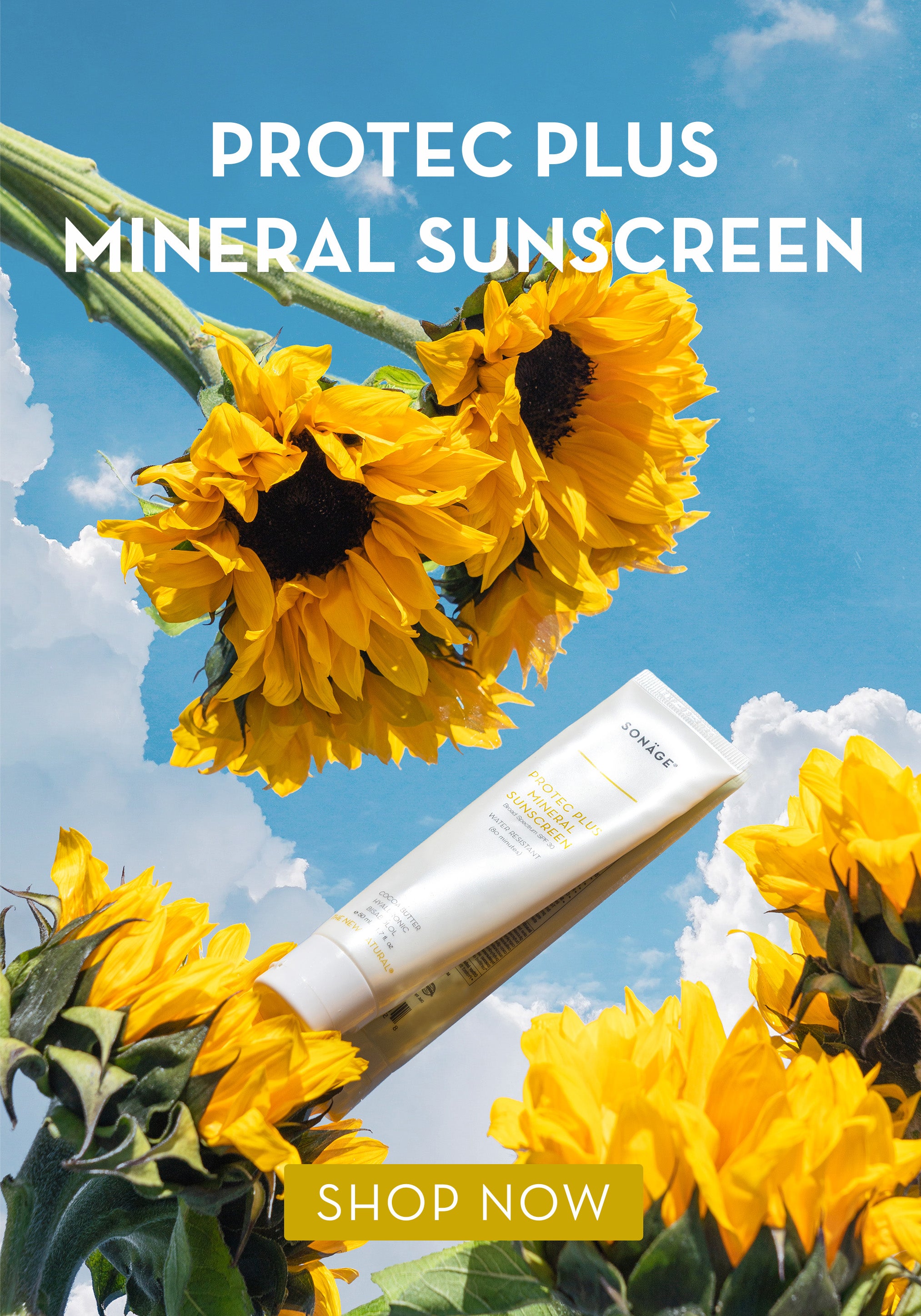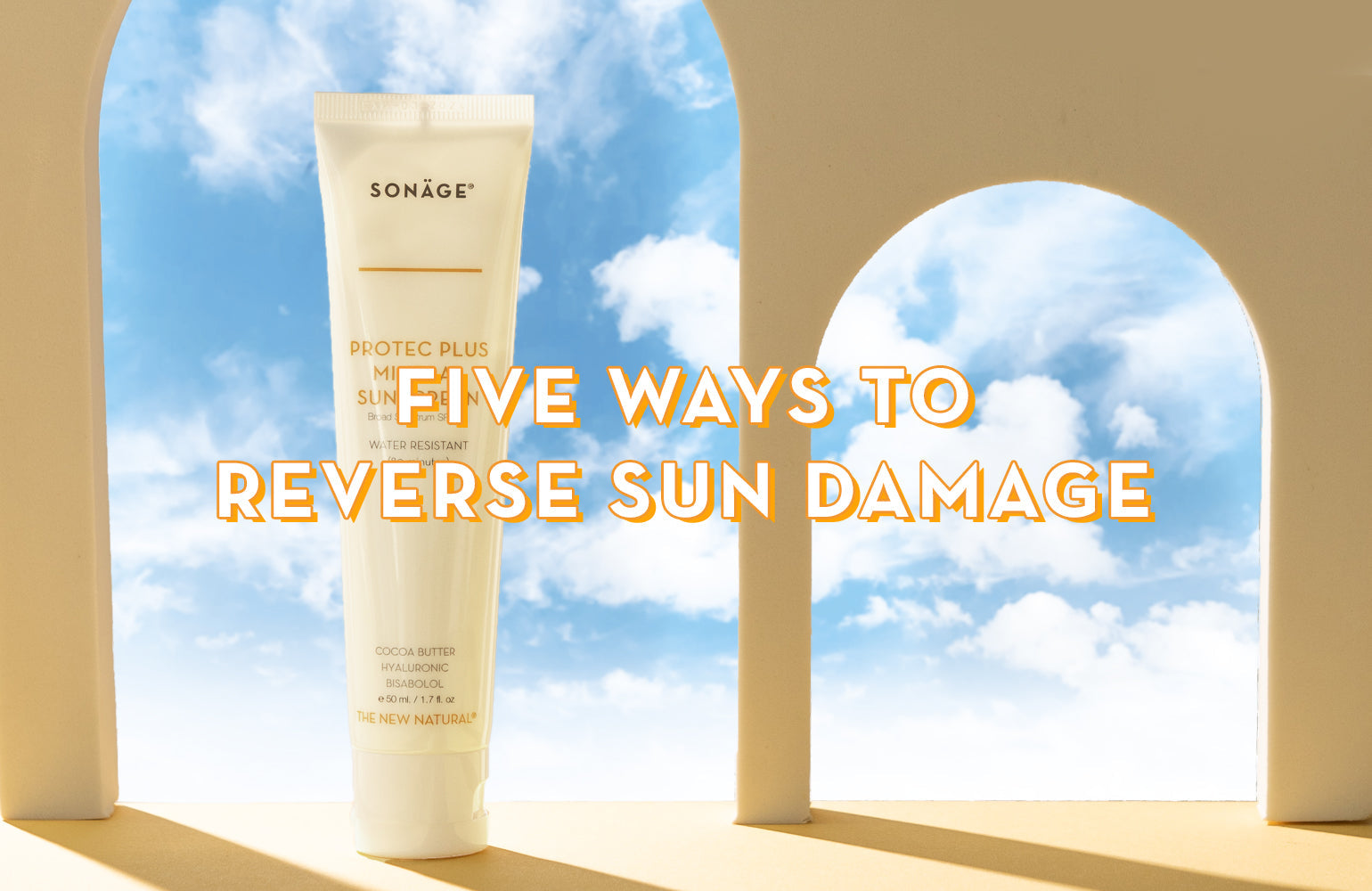
AT A GLANCE
-
WHAT IT IS
Sun damaged skin involves our skin deteriorating in the sun due to lack of protection -
WHAT IT DOES
Sun damage can wreak havoc on our skin and we wouldn't even know! It isn't visible to our naked eye, but it can include freckles and spots found on your skin. Read more on how you can prevent sun damage -
HOLY GRAIL PRODUCTS
Protec Plus Mineral Sunscreen
What is sun damaged skin and how to prevent it?
What Is Sun Damage On The Skin?
We often hear about sun damage, sun burn, and other sun related skin issues. Have you wondered what they are and how they are caused? It's a known fact that exposure to sunlight causes our skin to tan, but in addition to the bronzy tan, our skin will also be damaged. When exposed to sunlight, our healthy skin cells get damaged. This will cause our skin to get wrinkles, freckles, age spots, rashes etc. Furthermore, without protection and healing, sun damage can deteriorate our skin further to develop skin cancer, precancerous skin growth, or both.
Unlike tanning which is visible to our eyes, the sun damage caused isn't instantly visible to naked eyes. Only UV photography allows us to see the damage caused to our skin due to sun exposure.
What Does Sun Damaged Skin Look Like?
The most common way to spot a sun damaged skin is through spots and freckles. If age spots, freckles, fine lines, etc increase on your skin, then it means that your skin is damaged owing to sun exposure. These are usually more prominent near the nose and on the chest.
Another tell-tale sign of sun damaged skin is pigmentation. Sun damaged skin have uneven pigmentation. Melanin, produced by our body, protects skin from sun damage. When exposed to sun, the melanin protection increases causing a brown pigment on the skin, which is the reason for tanned looking skin. Sometimes, the sun may cause a disproportionate increase in melanin production. This leads to production of irregular coloring of skin, in other words pigmentation, of the skin.
It's even found that sometimes, exposure to the sun may permanently stretch small blood vessels. This will lead to a mottled, reddish appearance of skin, especially in people with lighter skintones.
Types Of Sun Damaged Skin
Apart from sun tan, sun burn, age spots, and freckles, other types of sun damaged skin are:
- Melasma: an abnormal patch of discoloration of skin, especially in the forehead, cheeks, chin, or around the lips.
- Actinic Keratoses: Common among people with light skintones and blind hair, AK are scaly brown or red patches on skin that may lead to cancer in some cases.
- Farmer’s Lip: Similar to Actinic Keratoses, this is a scaly brown patch that appears near lower lips.
- Carcinoma: A form of cancer, this usually starts as a pinkish bump on your skin that usually gets intense or bleeds when you wash your face. These spots/bumps can appear anywhere on your skin.
- Melanoma: Also, a form of cancer, but not that intense, this may appear brown, red, blue, or white depending on your skin tone.
How to prevent sun damaged skin?
The best and by far the only effective way to prevent sun damage is to wear a high protection SPF, i.e. a sunscreen, throughout your body and reapply it ever 3-4 hours. Also, make sure to cover your body well when you are exposed to sun.
Our recommendation is Sonage's Protec Plus Mineral Sunscreen is a lightweight, natural mineral sunscreen with Zinc Oxide provides broad-spectrum protection against free radicals generated by UV exposure. It also is water resistant for upto 80 minutes, thus you can have a fun time at the pool or beach as well without worrying about sun damage.

Read More:
- The Secret to Sun Protection: Why Mineral Sunscreen is The Best Choice
- Zinc Oxide Mineral Sunscreen For Face That Blends With Every Skin Tone



